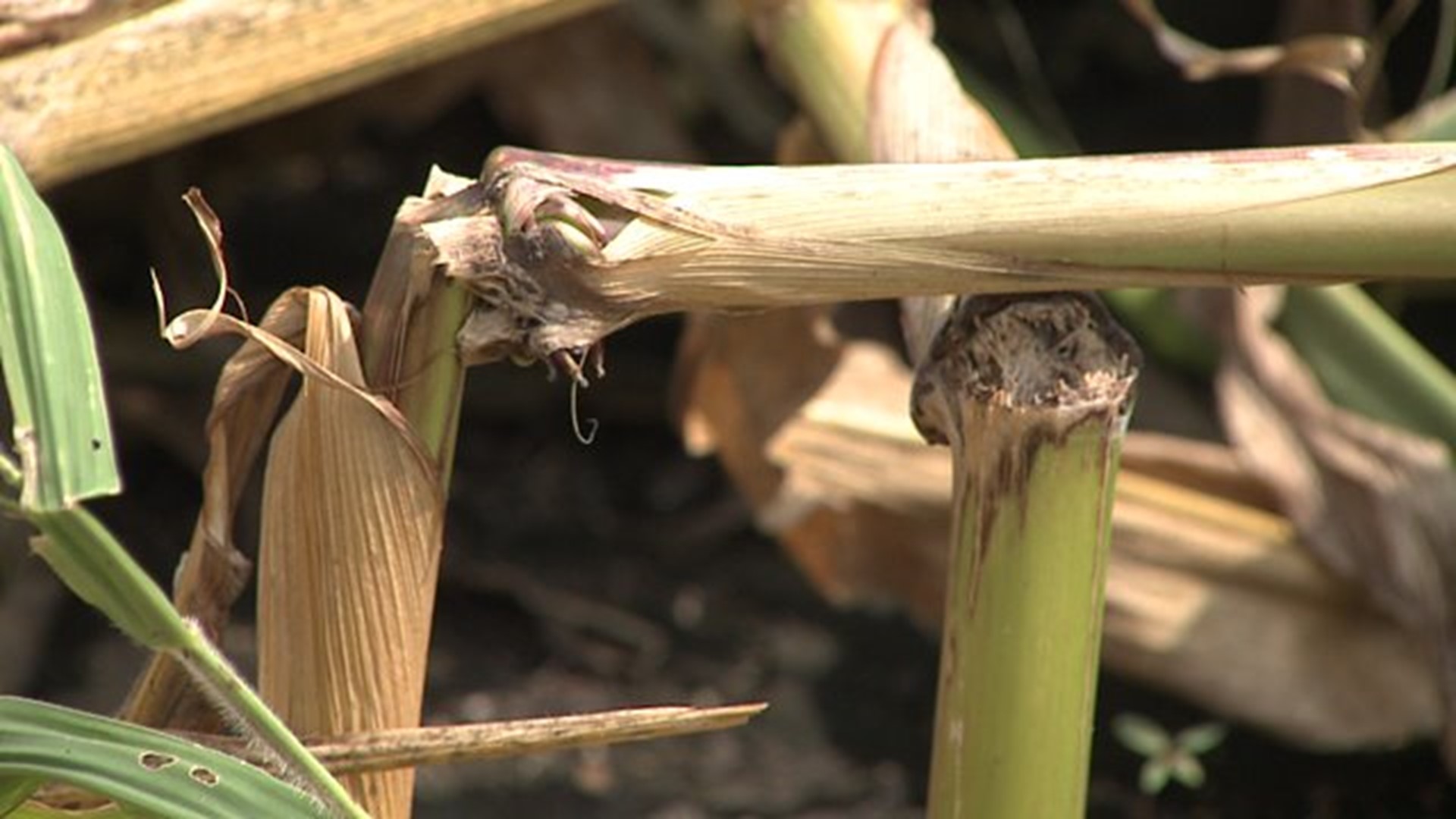Longtime Kirkwood, Illinois, farmer Wendell Shauman remembers the shock after a July 16 tornado.
In a matter of seconds, it tears apart his century-old farm.
"A guy calls," Shauman recalled. "He says, 'The whole place is gone.' "
Shauman asks, "What's that mean?"
Then, there's a painful realization.
"He was right," Shauman said. "It was gone."
It also races through nearby farms, damaging crops and flattening corn.
As a result, nearly half of the Illinois corn crop now rates fair to very poor.
More than half of the Illinois soybean crop also rates fair to very poor.
"Water has stood on the crop and really destroyed its chance to produce any crop in lots of places," said Emerson Nafziger, a crop specialist with the University of Illinois Extension.
One reason why dozens of farmers come to the University of Illinois Research Center in Monmouth on Tuesday.
The annual Field Day offers welcome advice during an extremely wet growing season.
"This is going to be one of those years when people are going to be very grateful for crop insurance and happy they have it," Nafziger continued.
Debris at Shauman's nearby farm illustrates the power behind severe weather.
The storm destroys a house, barn, grain bin and several sheds.
It damages every piece of his equipment and twists his soybean crop.
"The top node has turned almost at a right angle," he said. "The whole field was like that."
Shauman expects to evaluate his crops by air to determine the full damage.
Despite the storms, Warren County may fare better at harvest time than other parts of Illinois.
The state continues to lobby for federal disaster relief in the form of low-interest loans.
Insurance will cover most of Wendell Shauman's losses, but he will still have a tough decision.
"How much does it make sense to rebuild?" he asked. "Where do you put it? So, we're sitting down and having those discussions. Just what do you do?"
It's a real quandary at this century-old farm.

